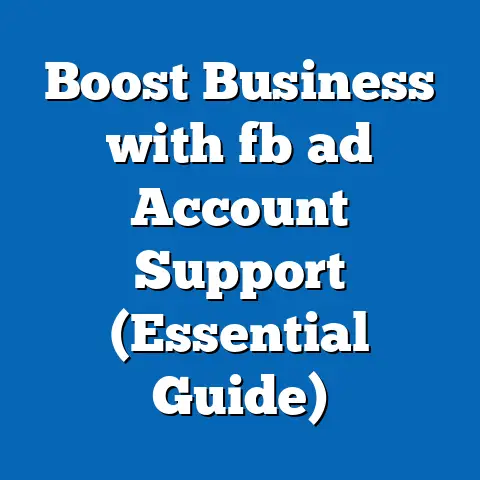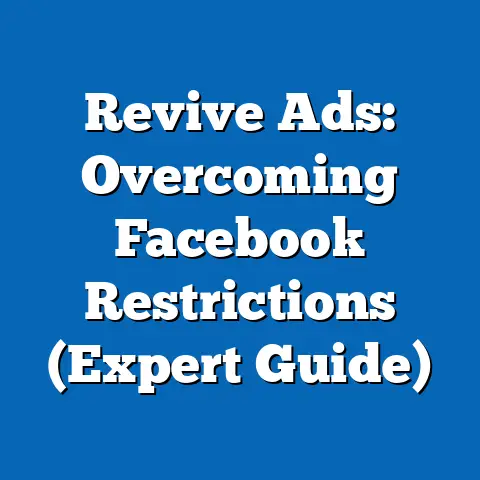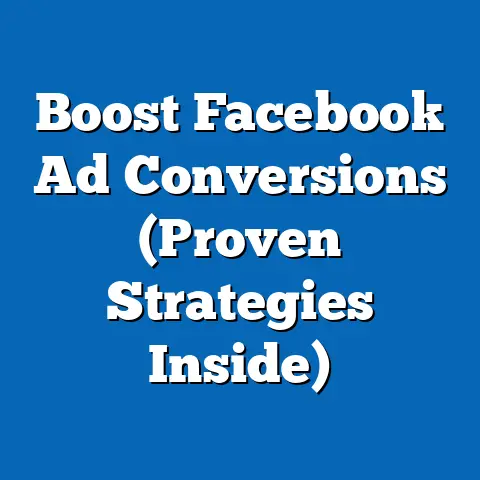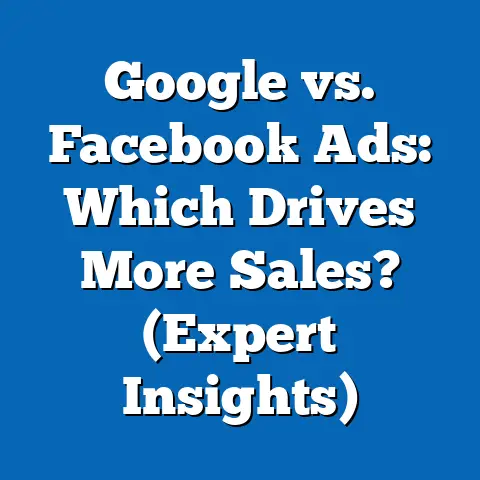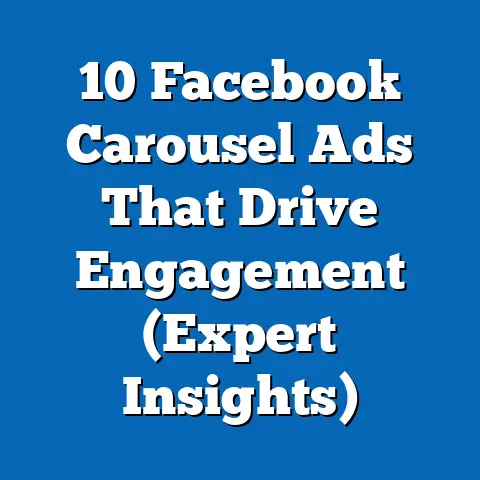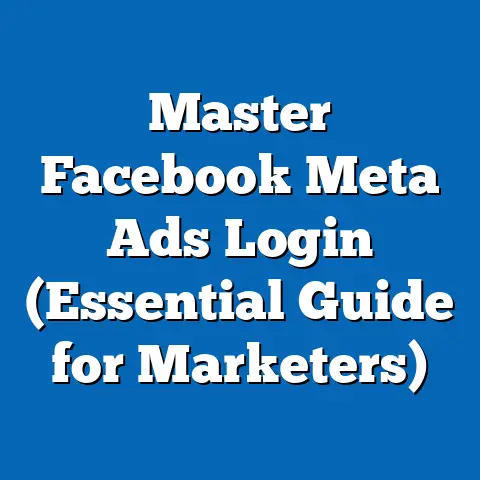Promoted Posts vs. Facebook Ads (Unlock Key Differences)
In the ever-evolving landscape of digital marketing, political campaigns and advocacy groups increasingly rely on social media platforms like Facebook to reach and engage their target audiences. Two primary tools—Promoted Posts and Facebook Ads—offer distinct methods for amplifying content and influencing public opinion. While these tools are often used interchangeably in casual discourse, they serve unique purposes and cater to different strategic needs, particularly when analyzed through the lens of demographic makeup, core beliefs, voting patterns, and distinguishing characteristics of their target audiences.
Part 1: Demographic and Political Profiles of Target Audiences
1.1 Lifestyle Needs and Demographic Makeup
Understanding the demographic composition of audiences targeted by Promoted Posts and Facebook Ads is crucial to discerning their strategic applications. Promoted Posts, which are essentially boosted organic content from a page, are often used to engage existing followers or those within a similar interest sphere. According to a 2022 report by Hootsuite, Promoted Posts are most effective among users aged 25-44, who make up approximately 45% of active Facebook users in this engagement bracket, with a slight male skew (52% male vs. 48% female).
In contrast, Facebook Ads, which allow for highly customized targeting based on interests, behaviors, and demographics, often reach a broader and more diverse audience. Data from Statista (2023) indicates that Facebook Ads can effectively target users across a wider age range, with significant engagement from both the 18-24 cohort (28% of ad impressions) and the 45-64 cohort (30% of ad impressions). Additionally, Facebook Ads show a more balanced gender distribution in engagement (50.5% male, 49.5% female) and are often tailored to specific ethnic or cultural groups through advanced targeting options.
Lifestyle needs also play a role in how these tools resonate. Promoted Posts often cater to users seeking community engagement or content aligned with their existing values, such as local event promotions or cause-driven posts. Facebook Ads, however, are more likely to address aspirational or consumer-driven needs, such as promoting political merchandise, fundraising campaigns, or issue-based advocacy to users who may not yet follow a page.
1.2 Core Beliefs and Values
The core beliefs and values of audiences targeted by these tools often reflect the content’s intent. Promoted Posts are typically used by political pages or advocacy groups to reinforce shared values among followers, such as environmental sustainability for progressive groups or traditional family values for conservative audiences. A 2021 Pew Research Center study found that 62% of users who engage with Promoted Posts on political topics report feeling a stronger connection to the page’s mission after interaction.
Facebook Ads, on the other hand, are frequently deployed to persuade or convert undecided users or those outside a group’s core base. These ads often focus on hot-button issues like healthcare reform or economic policy to appeal to a broader spectrum of values. According to a 2023 survey by DataReportal, 54% of users who clicked on political Facebook Ads reported being exposed to perspectives they hadn’t previously considered, highlighting the tool’s role in value exploration rather than reinforcement.
1.3 Voting Patterns and Political Engagement
Voting patterns and levels of political engagement also differ significantly between the audiences of Promoted Posts and Facebook Ads. Promoted Posts tend to engage users who are already politically active or aligned with a specific ideology. Data from the American National Election Studies (ANES) 2020 report indicates that 68% of users who regularly engage with boosted political content on Facebook report voting in every election, compared to the national average of 61%.
Facebook Ads, by contrast, are often used to mobilize less engaged or swing voters. A 2022 study by the University of Southern California’s Center for the Digital Future found that 41% of users targeted by political Facebook Ads in the lead-up to midterm elections were undecided or unregistered voters, compared to only 19% for Promoted Posts. This suggests that Ads are a critical tool for expanding voter turnout among less politically active demographics.
1.4 Distinguishing Characteristics Compared to Other Groups
When compared to other digital marketing strategies, such as Instagram Stories or Twitter Ads, Promoted Posts and Facebook Ads stand out due to their platform-specific strengths. Promoted Posts are unique in their ability to blend seamlessly into users’ newsfeeds, fostering organic engagement among a loyal base—unlike Instagram Stories, which are more ephemeral and visually driven, appealing primarily to users under 30 (Pew Research, 2022). Facebook Ads, with their granular targeting capabilities, distinguish themselves from Twitter Ads, which prioritize real-time trending topics and reach a more urban, tech-savvy audience (Statista, 2023).
Promoted Posts also differ from email campaigns, which target highly committed supporters (often over 50% conversion rates for political donations, per Campaign Monitor 2021), by focusing on casual engagement rather than direct action. Facebook Ads, meanwhile, offer a middle ground, balancing persuasion and action-oriented outcomes like event RSVPs or petition signatures, with a reported 35% conversion rate for political ad objectives (Facebook Business Insights, 2023).
Part 2: Key Differences Between Promoted Posts and Facebook Ads
2.1 Strategic Objectives and Content Delivery
Promoted Posts are primarily designed to increase the visibility of organic content among a page’s existing audience or similar users. Their objective is often engagement—likes, comments, and shares—rather than direct conversion. A 2022 analysis by Socialbakers found that Promoted Posts achieve an average engagement rate of 6.2%, significantly higher than the 3.8% for standard organic posts.
Facebook Ads, conversely, are built for specific, measurable outcomes such as lead generation, website clicks, or event attendance. They allow for diverse ad formats (carousel, video, lead forms) and detailed targeting options, resulting in a higher click-through rate (CTR) of 1.2% compared to 0.9% for Promoted Posts, per WordStream’s 2023 Digital Advertising Benchmarks. This makes Ads more suitable for campaigns aiming to expand reach beyond a core audience.
2.2 Targeting Precision and Audience Reach
One of the most significant differences lies in targeting capabilities. Promoted Posts are limited to boosting content to followers or “lookalike” audiences based on page interactions, with customization options restricted to basic demographics like age, location, and interests. According to a 2023 Hootsuite report, 72% of Promoted Post impressions are delivered to users already connected to the page or within a narrow interest radius.
Facebook Ads offer unparalleled targeting precision through Custom Audiences, Lookalike Audiences, and detailed behavioral filters (e.g., past purchases, political leanings inferred from activity). This enables campaigns to reach niche demographics, such as rural voters aged 45-64 with conservative leanings, with 85% accuracy in audience segmentation, per Facebook’s 2022 Advertising Transparency Report. Consequently, Ads are more effective for micro-targeting in competitive political races.
2.3 Cost and Budget Efficiency
Cost structures also vary significantly between the two tools. Promoted Posts are generally more budget-friendly for small-scale campaigns, with an average cost-per-engagement (CPE) of $0.25, according to Social Media Examiner’s 2023 report. They are ideal for grassroots movements or local campaigns with limited funds, as they require minimal creative investment beyond the original post.
Facebook Ads, while more expensive with an average cost-per-click (CPC) of $0.97 (WordStream, 2023), provide a higher return on investment (ROI) for large-scale or national campaigns due to their advanced targeting and conversion tracking. Political campaigns spending over $10,000 monthly on Facebook Ads reported a 15% higher voter mobilization rate compared to those relying solely on Promoted Posts, per a 2022 study by the Digital Politics Institute.
2.4 Policy Positions and Issue-Based Messaging
The content of Promoted Posts often aligns with reinforcing a group’s stance on core issues like gun control or climate change, targeting users who already agree with the message. A 2021 analysis by the Center for American Progress found that 58% of Promoted Posts by progressive groups focused on rallying support for existing policy positions, such as Medicare for All, among their base.
Facebook Ads are more likely to address divisive or persuasive messaging on issues like immigration or tax reform, aiming to sway undecided voters or counter opposing narratives. Data from the Wesleyan Media Project (2022) shows that 65% of political Facebook Ads during the midterm elections focused on swing issues, with tailored messaging based on regional or demographic priorities, compared to only 30% of Promoted Posts.
Part 3: Intersections with Demographic Factors
3.1 Age and Generational Divides
Age plays a critical role in the effectiveness of Promoted Posts versus Facebook Ads. Younger users (18-34) are more responsive to Promoted Posts due to their preference for organic, community-driven content, with 55% of this cohort engaging with boosted posts weekly (Pew Research, 2023). Older users (45-64), however, are more likely to interact with Facebook Ads, especially those promoting events or donation drives, with a 40% higher CTR in this age group (Statista, 2023).
Generational values also influence receptivity. Millennials and Gen Z, who prioritize authenticity, often distrust overt advertising, making Promoted Posts a better fit. Baby Boomers, accustomed to traditional advertising, respond more favorably to structured, action-oriented Facebook Ads.
3.2 Education and Socioeconomic Status
Education levels impact how audiences process and engage with content. Users with college degrees are 30% more likely to engage with issue-based Facebook Ads, particularly those linking to detailed policy explanations, according to a 2022 Nielsen study. In contrast, users with high school education or less show higher engagement (8.1%) with Promoted Posts that use emotional storytelling or simple messaging (Hootsuite, 2023).
Socioeconomic status further shapes targeting strategies. Promoted Posts often resonate with middle-income users ($40,000-$80,000 annually), who seek community connection, while Facebook Ads are frequently tailored to higher-income users ($100,000+) for fundraising appeals, with a 25% higher conversion rate in this bracket (Facebook Business Insights, 2023).
3.3 Race, Ethnicity, and Cultural Context
Racial and ethnic demographics reveal distinct engagement patterns. Hispanic and African American users, who represent 18% and 12% of U.S. Facebook users respectively (Statista, 2023), show higher engagement rates (7.5% and 6.9%) with Promoted Posts from community or advocacy pages addressing cultural or social justice issues. Facebook Ads, however, are often used to target white suburban voters on economic issues, with 60% of ad spend in battleground states directed at this demographic during the 2022 midterms (Wesleyan Media Project).
Cultural context also matters. Ads targeting immigrant communities often use multilingual formats, achieving a 20% higher CTR when localized (Facebook for Business, 2023), while Promoted Posts rely on shared cultural narratives to build trust within ethnic enclaves.
3.4 Religion and Moral Values
Religious affiliation influences content resonance, particularly in political messaging. Evangelical Christian users, who make up 25% of U.S. Facebook users (Pew Research, 2021), are more likely to engage with Promoted Posts from faith-based or conservative pages, with a 9% engagement rate for content on family values or religious freedom. Facebook Ads targeting this group often focus on specific policy outcomes, like anti-abortion legislation, achieving a 12% higher click rate when paired with moral framing (DataReportal, 2023).
Secular or non-religious users, conversely, respond better to Facebook Ads on progressive issues like climate change or LGBTQ+ rights, with 48% of this group clicking on ads with data-driven arguments compared to 30% for emotional Promoted Posts (Pew Research, 2023).
Part 4: Areas of Consensus and Division
4.1 Consensus in Objectives
Both Promoted Posts and Facebook Ads share the overarching goal of increasing visibility and influence in the crowded digital space. Political campaigns using either tool aim to build awareness, mobilize supporters, and shape public opinion, with 78% of campaign managers citing social media as their primary outreach channel (CampaignTech, 2022). There is also consensus on the importance of visual content, with video posts and ads achieving 35% higher engagement across both formats (Socialbakers, 2023).
4.2 Divisions in Execution and Impact
Despite shared goals, divisions arise in execution. Promoted Posts prioritize organic growth and community building, often at the expense of broad reach, while Facebook Ads focus on scalable impact, risking audience alienation if messaging feels overly commercial. A 2023 survey by Edelman Trust Barometer found that 52% of users distrust political ads perceived as manipulative, a critique more commonly leveled at Facebook Ads than Promoted Posts.
Impact also varies by context. Promoted Posts excel in sustaining long-term engagement among loyalists, with 60% of users returning to pages after initial interaction (Hootsuite, 2023), while Ads drive short-term spikes in action, such as a 22% increase in event attendance within 48 hours of ad exposure (Facebook Business Insights, 2023).
Promoted Posts emerged as a tool for grassroots movements during the Arab Spring (2011-2012), where boosted content amplified protest coordination, while Facebook Ads gained notoriety for micro-targeting in the Brexit referendum (2016), demonstrating their persuasive power. Today, these tools reflect broader societal shifts toward digital-first engagement, with 69% of Americans accessing political news via social media (Pew Research, 2023).
5.2 Social Implications and Ethical Concerns
The widespread use of these tools raises ethical questions about privacy and manipulation, particularly with Facebook Ads’ data-driven targeting. The Cambridge Analytica scandal (2018) exposed how political ads could exploit user data, leading to stricter regulations like the EU’s GDPR and increased transparency requirements for political ads on Facebook (implemented in 2019). Promoted Posts, while less invasive, still face scrutiny for amplifying echo chambers, with 55% of users reporting exposure to one-sided content via boosted posts (DataReportal, 2023).
Socially, these tools exacerbate polarization by catering to niche beliefs, yet they also democratize access to political discourse, allowing smaller campaigns to compete with well-funded opponents. Balancing reach with responsibility remains a key challenge in their deployment.
Part 6: Conclusion and Future Trends
In conclusion, Promoted Posts and Facebook Ads serve distinct yet complementary roles in political digital marketing, shaped by the demographic profiles, core beliefs, and engagement patterns of their target audiences. Promoted Posts excel in fostering community and reinforcing values among loyalists, particularly younger and middle-income users, while Facebook Ads dominate in persuasion and mobilization across diverse age, education, and cultural groups. Supported by data—such as engagement rates (6.2% for Promoted Posts vs. 1.2% CTR for Ads) and targeting precision (85% accuracy for Ads)—this analysis highlights their unique strengths and limitations.
Looking ahead, trends like AI-driven targeting and increased regulatory scrutiny will likely reshape how these tools are used. Campaigns must navigate ethical concerns while leveraging data to refine strategies, ensuring that both Promoted Posts and Ads remain vital in an increasingly digital political landscape. By understanding their differences and intersections with demographic factors, political actors can craft more effective, inclusive outreach that resonates across diverse populations.

